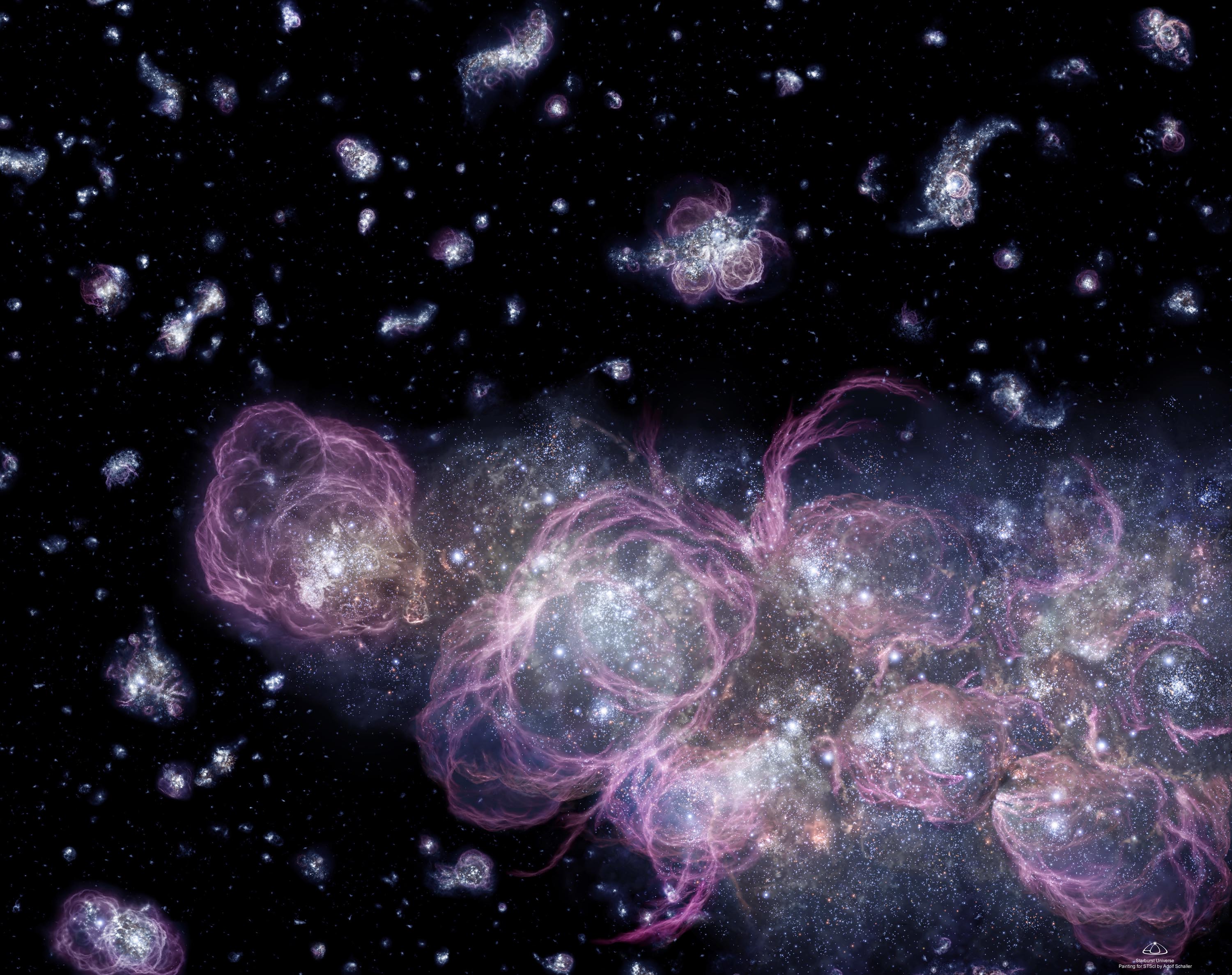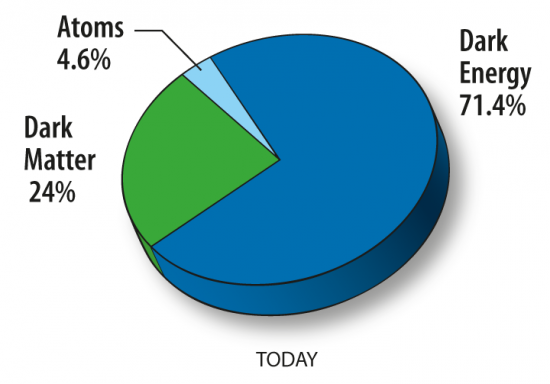The known
universe contains trillion of galaxies with billions of stars in it. Looking at
the big picture, the galaxies in universe are connected to each other by an
invisible web of dark matter. Due to some clever use of gravitational lensing
these threads of dark matter are now captured for the first time.
Artist's
impression of how the Dark Matter could have been like in very early Universe
might have looked.
A team of
astronomers at the University of Waterloo in Canada has seen the un-seeable
using the space-bending effects of dark-matter to create a visual of their dark
features by combining the catalogs of galaxy groups that act as lenses with
catalogs of data on the light-sources behind them.
Interesting
thing is that what we observe through telescope only makes the five percent of
observable universe. Other 68 percent of it exists, is some sort of energy that
pushes space apart at ever faster speeds. Since so little else is known about
this, the cause is referred to as 'dark energy'.
We only know
the effect of dark matter not its cause and it makes almost 27 percent of the
observable universe. Dark matter is different. It makes up about 27 percent of
the observable Universe; and like dark energy, we can see an effect without
knowing much about what seems to be causing it.
First Image
of Dark Matter. Dark matter filaments bridge the space between galaxies in this
false color map. The locations of bright galaxies are shown by the white
regions and the presence of a dark matter filament bridging the galaxies is
shown in red. Credit: S. Epps/M. Hudson/University of Waterloo
Clumps of
dark matter sit silently, making a bit of a dent in the surrounding fabric of
the Universe but not responding to anything else. That effect is basically
gravity. As most materials that have mass also seem to either emit or absorb
electromagnetic radiation.
So far we
are not able to calculate the exact mass there should be to account for the
movements and positions of stars and galaxies.
According to
the most accepted theories of the universe, dark energy is thought to
contribute 73 percent of all the mass and energy in the universe. Another 23
percent is dark matter, which leaves only 4 percent of the universe composed of
regular matter, such as stars, planets and people. Pie chart via NASA.
Through this
we are able to analyze that old bright matter form clumps while more prevalent
dark matter forms holes around the glowing gas and stars. That also means
galaxies tend to settle along these threads, forming interconnected
superclusters that stretch out in maps not just of space, but of time itself.
Knowing dark
matter lies between visible galaxies on the cosmic web is one thing – actually
seeing it is something else.
The curves
and dimples that produces with the drifts of light caused effects of gravity.
The threads of dark matter appear to be strongest between bunches of galaxies
less than 40 million light-years apart.
Adding this
high resolution to existing maps could finally reveal a few more enticing
details about this very much mysterious form of matter and would tell us how
Universe evolved.
The
astronomers were able to use slight variations to build a relatively detailed
map of the bridges of otherwise invisible dark matter connecting them, by
combining various images of 23,000 pairs of galaxies about 4.5 billion
light-years away.
Epps said:
"By using this technique, we're not only able to see that these dark
matter filaments in the universe exist, we're able to see the extent to which
these filaments connect galaxies together."
Researcher
Mike Hudson said: "For decades, researchers have been predicting the
existence of dark-matter filaments between galaxies that act like a web-like
superstructure connecting galaxies together. This image moves us beyond
predictions to something we can see and measure."
It'll just
make us picture the Universe as a cosmic ball of sugar.
This
research was published in Monthly Notices of the Royal Astronomical Society.





Post A Comment:
0 comments: